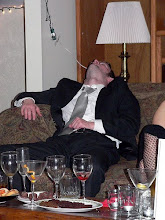 |
| fig. 1: Why Spies Really Wear Tuxedos. |
Imagine if the Daniel Craig era ended after Quantum of Solace, and you'd have Licence to Kill. Both films came on the heels of a highly publicized writers' strike, both are the second films of their respective Bonds, both follow on the heels of an entry pivoting the character as a more straightforward romantic figure, both feature James Bond out for revenge, and both reside somewhere near the stylistic limit of what one can expect from a James Bond film.
With Quantum, it was serialization, and the anti-hero. With Licence, it's 1980's action movies. James Bond spends the entire run of this film in North America, specifically the Florida Keys, the Bahamas, and fictional Panama City stand-in, Isthmus City. Apart from a lone scene between Moneypenny and M, we never even set foot in Britain. Bond's entire aesthetic has been subsumed by that of American films like Commando, Lethal Weapon, and First Blood, among others.
Including, quite by accident, that decade's fascination with ninjas. The arrival of highly trained ritualistic assassins from the Far East isn't completely inorganic (it follows the reveal that Sanchez is looking to expand his operation into the Pacific Rim) but it's a holdover from an earlier version of the script, when James Bond was set to be doing all of this daring-do in the South Pacific as opposed to South Florida. Between the writers' strike and the expense of filming in China, the producers scrapped this aspect, but a vestige of it remains.
In fact, it was Bond who brought the ninja to the Western imagination, way back in book form in Fleming's novel You Only Live Twice, twenty-five years before this picture. That, and the reintroduction of Judo to the 1964 Olympics, and the meteoric rise of Bruce Lee and accompanying interest in Japanese and Hong Kong cinema. It's worht pointing out that the agents in this film are explicitly from Hong Kong, though coded as ninjas, a Japanese tradition.
 |
| fig. 2: Only slightly more racist than if we are still in the Pacific Rim. |
Looming over all of this is the character of Sanchez himself, a spectacular figure of urbane evil. With the Cold War winding down, producers chose instead to focus on the War On Drugs, and personified it in the form of a Pablo Escobar-type figure with whom Bond eventually ingratiates himself, in order to sow discord, Iago-like, throughout the organization. Like Quantum of Solace, Licence to Kill busies itself with more grounded concerns than the proxy war through would-be tyrants the character had frequently faced, and, much like that film, there is the slow creep of James Bond weirdness reasserting itself. Quantum doesn't quite land the job by the end, but Licence manages it admirably, with its shootout at a televangelist's mountain sanctuary that doubles as a cocaine chemistry experiment.
We spend almost as much time with Sanchez as we do with Bond, watching the inner workings of his empire and his paranoia as it begins to crumble. Though evil and sadistic, he lacks the overt flair of some of 007's more famous antagonists (with the exception of a truly amusing bit with, appropos of nothing, a pet iguana) and that, again, grounds him and makes him more real. I'd be tempted to say that intrusion of wierdness is what dooms him, but then the whole operation was his baby.
 |
| fig. 3: "You want a kiss, too?" |
Licence to Kill would mark the end of Timothy Dalton's brief tenure as 007. Legal wrangling over character rights would keep Bond off the silver screen for six years, and in the intervening time, impatient and frustrated, Dalton quit the franchise. He's often overlooked (as is this film, for its stylistic divergence) but his take on the character--a little glum, his heart a little more on his sleeve--is very much the model that the Daniel Craig films would follow. They're worthy of a second look.




No comments:
Post a Comment